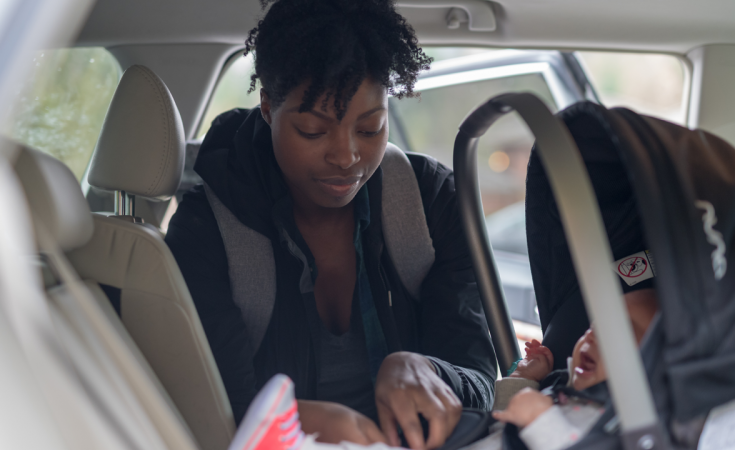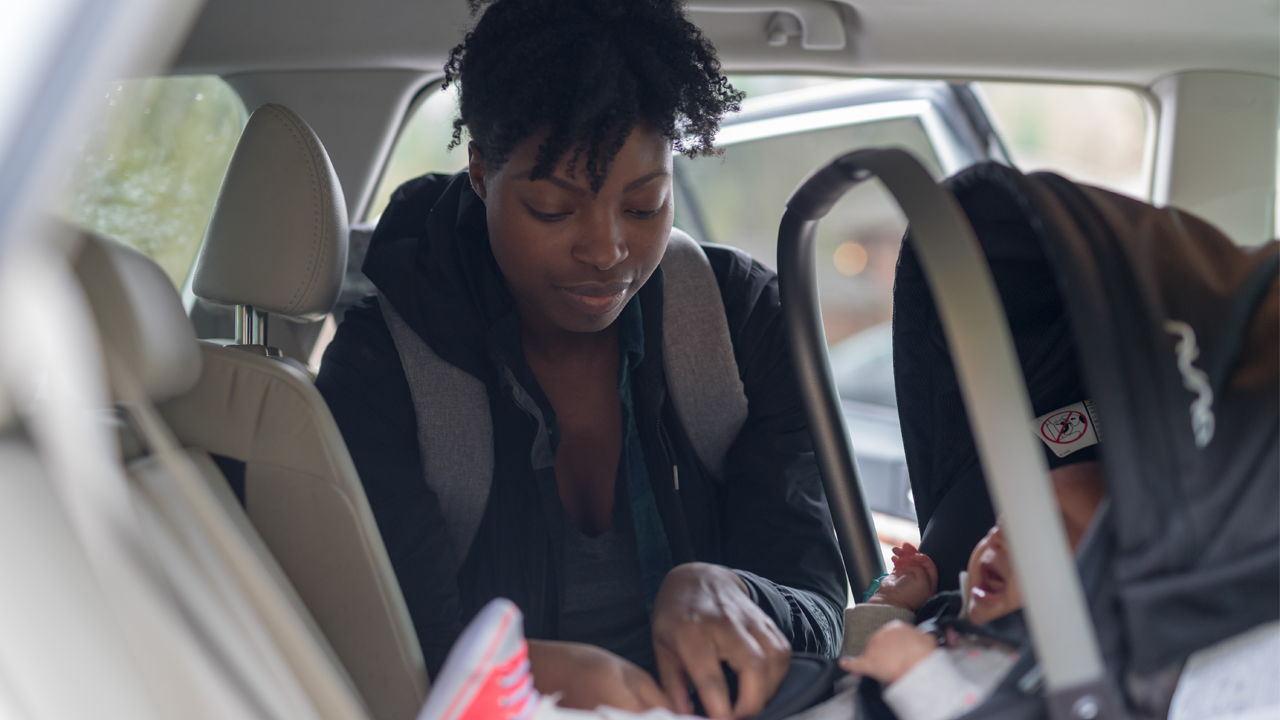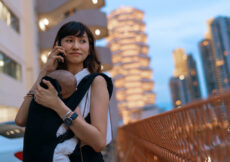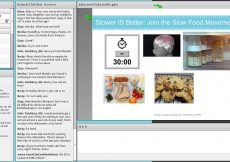When my daughter was a baby, every car ride ended in tears—hers, and often mine. She could only entertain herself for a few minutes before starting to wail. It was so bad that for a while, we tried to just stay close to home, going to local playgrounds instead of meeting friends across the city.
Unfortunately, some kids just hate their car seats. “My daughter screamed every time she was in the car as a baby,” says Toronto parenting coach Sarah Rosensweet. “I remember her screaming, and then I would get so upset, I was almost sweating.”
But we can’t always just stay home. Grocery-store trips and school runs for older siblings are facts of life. So what can you do if you have a pint-sized protester in your back seat? Here are some tricks to try if your baby or toddler hates car rides.
Investigate
Start with the basics—maybe your baby is uncomfortable for some reason. Is there light shining in their eyes? Is it hot or cold in the backseat? Are the straps adjusted correctly, so they’re not too tight or too loose, and are they in the right spot behind their shoulders?
“The straps could be pinching skin, the buckles might be hot from the sun, or the baby may be cold,” says Shawn Pettipas, director of Community Engagement at BCAA, which runs one of the largest carseat education programs in B.C. “There could be lots of reasons.”
Check your seat
Next, double-check your car seat is installed correctly—most aren’t. “You really do need to make sure that your child is correctly reclined for their age and stage,” says Pettipas. An incorrect angle can be uncomfortable, and be dangerous—your baby could suffocate if their neck is at the wrong angle. It’s different for every seat, so Pettipas recommends going to a car seat safety clinic or checking the manual of your car seat to make sure you’ve got it right.
Some parents find switching from an infant bucket seat to a roomier convertible style can help their babies feel better. Look for one that’s safe for your baby’s age—they do go all the way down to newborns (though most parents choose the portability of infant bucket seats at this age). Other young babies are the opposite, and are calmed by feeling a bit more snug. A safe way to do that is to roll up two receiving blankets, and tuck them in the sides of the seat.
Whatever you do, don’t turn the seat around from rear-facing to front-facing too early. “I’m asked all the time if parents can turn the seat, because they think the baby doesn’t like being rear-facing. They think they’re upset because of that, or maybe they have some FOMO,” says Dina Kulik, a paediatrician in Toronto. “But babies absolutely need to be rear-facing until at least two years of age, and actually as long as you can possibly go. Later is better.”
Test out different feeding schedules
Rosensweet suspects her daughter was screaming because she was feeling ill—as she got older, it became clear that she had carsickness. “Now, she takes Gravol before car rides,” she explains. (Note that Gravol is not safe for kids under age two.)
It’s unusual to have a carsick kid who doesn’t show it, says Kulik. “Usually you would know if it’s carsickness, because your child would be vomiting. Carsickness is much less common than parents think,” says Kulik.
Kids who are carsick tend to do better on an empty stomach, so putting your baby or toddler in the seat after it’s been awhile since they’ve eaten can help. Having the windows open or the air conditioning on can also help with motion sickness.
Distract, distract, distract
Try to make your baby forget that they’re strapped in, and perhaps a bit further away from their parent than they’d like, by making it fun. Talk to them, play kids music, or just belt out a few tunes. While it’s not safe to offer snacks that could be a choking hazard in a moving car, car seat-safe mirrors can be very helpful, says Kulik, because babies like looking at themselves. (If you do offer a pouch or puffs in the car seat, a mirror can help you keep an eye on them while they’re rear-facing.)
When babies are a little older—usually after about nine months old—toys can help distract them, too.“Having some special toys that they only get to play with when they’re in the car seat can work really well,” says Rosensweet. Just make sure they’re age-appropriate and soft, like stuffies or pillows, because hard toys can injure passengers in a crash. “Everything that is not tied down gains weight exponentially in a collision,” says Deanna Lindsay, executive director of SEATS for Kids, an organization that runs car seat inspection clinics in Ontario. “I usually say, would it hurt you if I threw it at you? Then it can’t be in the car.”
Empathize and console
For many parents, car seats are one of the first times they have to set a boundary that their child is unhappy with.
To help a baby or toddler through big feelings, the first step is to stay calm. Little kids naturally co-regulate and match your internal state, says Rosensweet, so give yourself some empathy first. “You might think, my child is really upset, and there’s nothing I can do about it,” she says. “This is really hard.”
Then, validate your child’s emotions. “You could say—even over the screaming—‘Oh sweet pea, you hate the car seat so much, this is so hard. You wish you weren’t in the car seat so badly. Mama’s going to get you out in a few minutes,” she says.
For a toddler who is testing boundaries, and able to understand and communicate more than a baby can, you might want to take a bit of a harder line. “The key thing is to stay very neutral,” says Jennifer Kolari, a child and family therapist and the founder of Connected Parenting. “If you’re coming at it from a place of fear, then the child is going to pick up on the idea that they have a lot of power, or maybe this is something bad.” Instead, stay positive, and say something like, “I love you. It’s OK if you’re mad at me, but you’re going in this car seat, and it’s going to be fine.”
It builds resilience—and it’s a good chance for you to practice responding in a helpful way when they’re upset, she says. “It’s a skill you’ll still be using when they’re teenagers.”



































